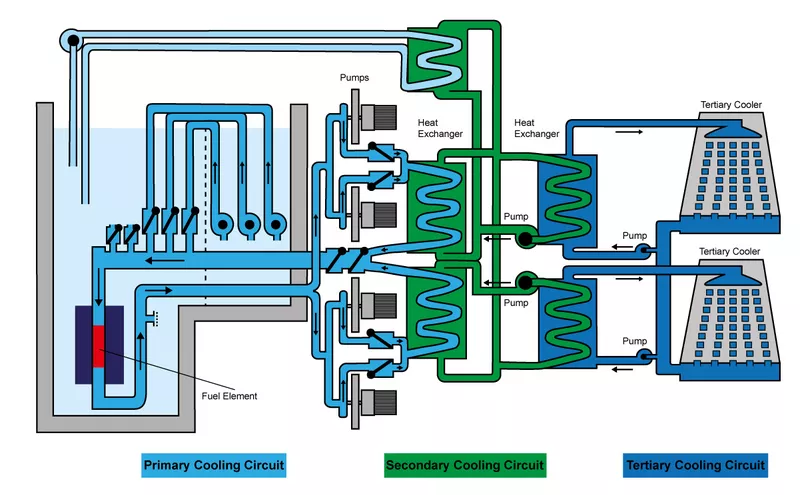Three completely separated cooling circuits
This deceleration is achieved particularly effectively by collisions with hydrogen atoms, e.g. water molecules, in which the kinetic energy of the neutrons is converted into heating the cooling chain of three hydraulically, separated but thermally connected cooling circuits. The primary circuit runs directly through the fuel element. The four main coolant pumps deliver approximately 300 l/s of water, which heats up from approximately 35 °C to 50 °C as it passes through the fuel element. This heat is transferred to the secondary circuit via two heat exchangers.
Both the primary and secondary circuits are located entirely within the reactor building. The tertiary circuit in turn is thermally connected via a heat exchanger to the secondary circuit. Only the tertiary circuit leads outside to the cooling towers in which the heat is primarily dissipated via evaporation to the ambient air.
Besides this main cooling chain, there are several secondary cooling circuits which ensure the cooling of other units e.g. the ambient air or experimental facilities.
